Natural progesterone cream has become a popular over-the-counter option for women seeking relief from hormonal symptoms, but many wonder if it actually delivers on its promises. These creams contain bio-identical progesterone that matches what the body produces naturally, and they’re marketed for everything from menopause symptoms to PMS relief.
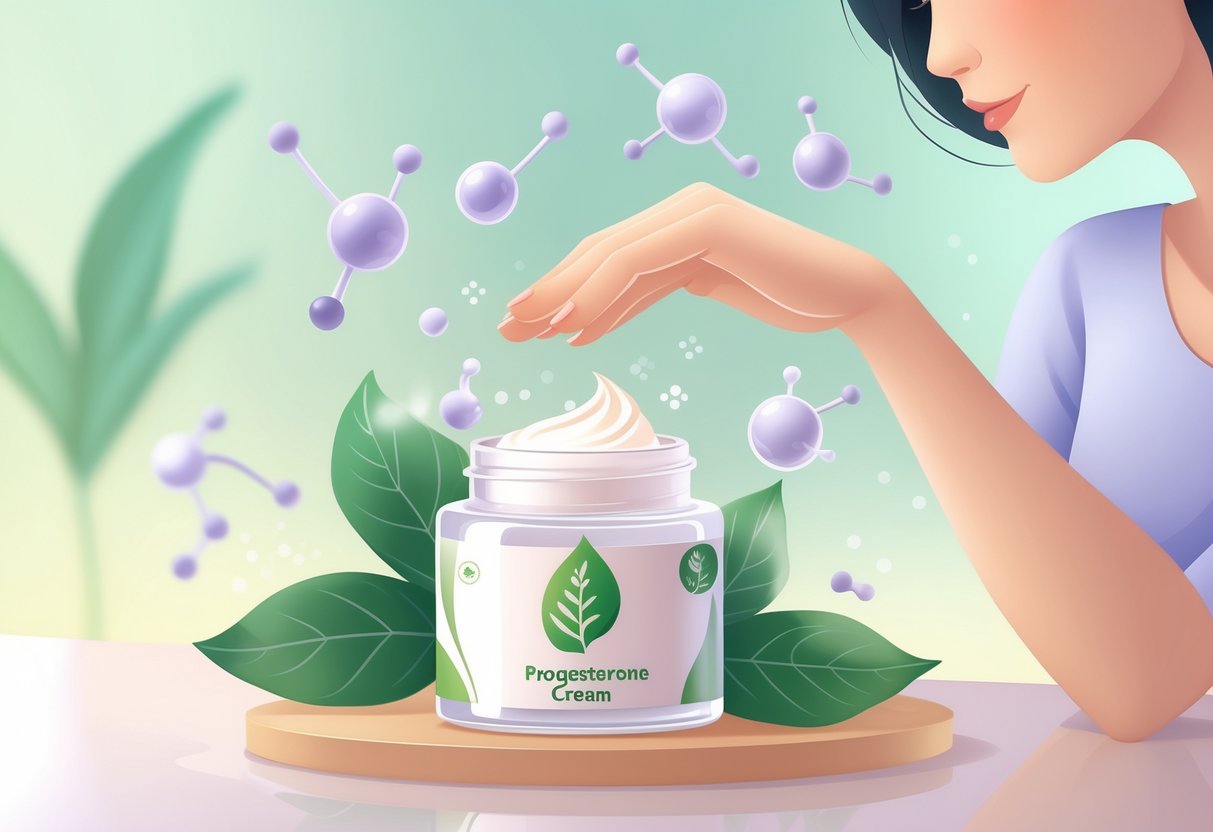
Natural progesterone cream can be effective for some women when used correctly, particularly for addressing symptoms of low progesterone[1] like sleep problems, mood swings, and menstrual irregularities. However, the results vary significantly from person to person, and proper timing and dosage are critical for success.
The key lies in understanding whether someone actually has low progesterone levels and how to use the cream properly. Many women experience benefits, while others see little improvement or even develop side effects from incorrect usage. The effectiveness often depends on individual hormone levels, the quality of the product, and following proper application guidelines.
Key Takeaways
- Natural progesterone cream contains bio-identical hormones that can help balance estrogen dominance when progesterone levels are low
- Proper timing during the menstrual cycle and correct dosage are essential for the cream to work effectively
- Side effects like weight gain and drowsiness[1] can occur if the cream is overused or applied incorrectly
What Is Natural Progesterone Cream?
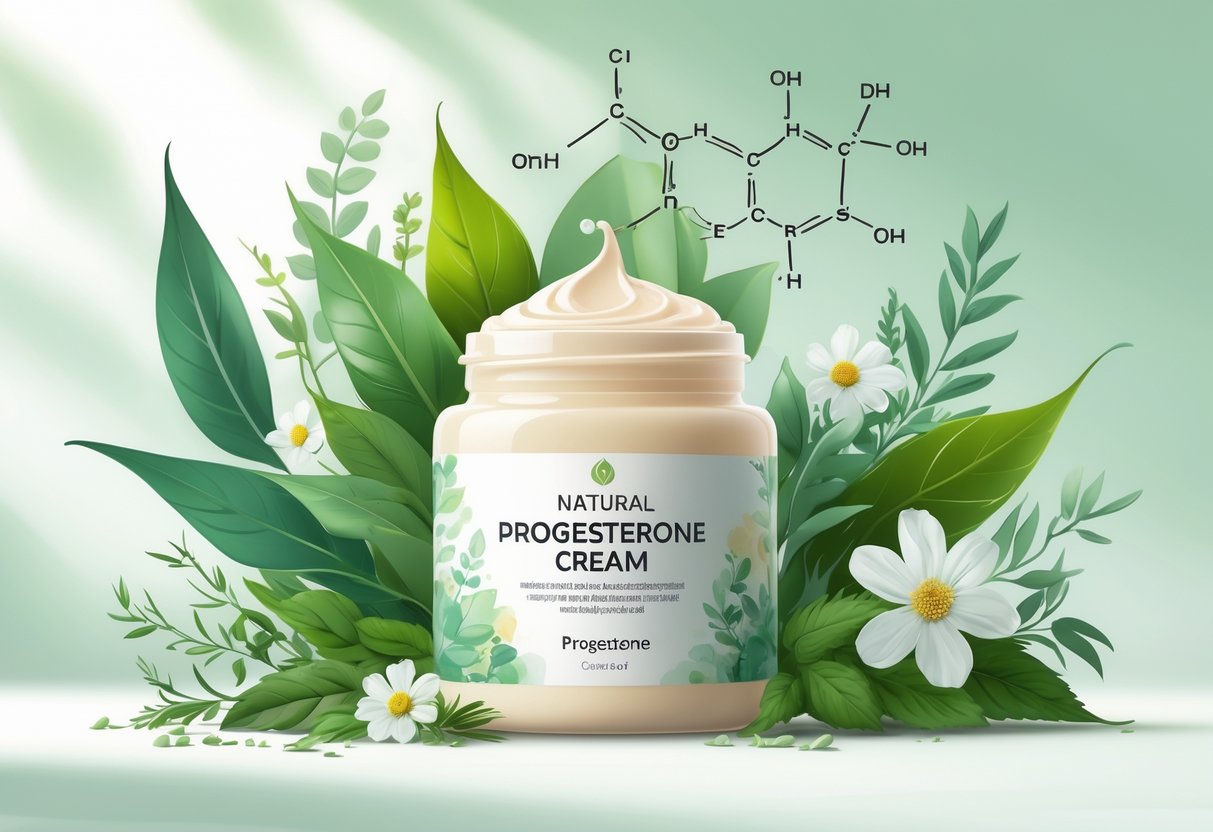
Natural progesterone cream contains bio-identical progesterone that matches the hormone produced by the human body. This cream differs significantly from synthetic hormone alternatives in both structure and how the body processes it.
Definition and Sources
Natural progesterone cream is an over-the-counter topical treatment[2] that contains progesterone USP (United States Pharmacopeia). This bio-identical hormone has the exact same molecular structure as the progesterone made naturally in women’s ovaries.
The progesterone in these creams comes from plant sources. Wild yam and soybeans are the two main plants used to create natural progesterone. These plants contain diosgenin, a compound that can be converted into progesterone in laboratory settings.
Important note: The human body cannot convert diosgenin from wild yam into progesterone on its own. This conversion must happen through a manufacturing process before the hormone becomes active.
Progesterone USP is the bio-identical version[1] of progesterone and represents the same hormone that the body produces naturally. This standardized form ensures consistent potency and purity across different products.
How Natural Progesterone Differs from Synthetic Progestins
Natural progesterone and synthetic progestins have completely different chemical structures. This difference affects how they work in the body and what side effects they may cause.
Key Differences:
| Natural Progesterone | Synthetic Progestins |
|---|---|
| Identical to body’s hormone | Chemically altered structure |
| Metabolized naturally | Creates different byproducts |
| Available over-the-counter | Usually requires prescription |
| Generally fewer side effects | More potential side effects |
Synthetic progestins are found in birth control pills and some hormone replacement therapies. These artificial hormones can bind to different hormone receptors in the body, potentially causing unwanted effects.
Natural progesterone breaks down into metabolites that the body recognizes and processes normally. Synthetic progestins create different breakdown products that may interfere with other body functions.
Role of Progesterone in the Body
Progesterone plays several critical roles in women’s health. This hormone helps regulate and balance estradiol[1] in the female body, preventing estrogen dominance.
Primary Functions:
- Menstrual cycle regulation: Progesterone rises during the second half of the menstrual cycle
- Fertility support: Essential for preparing the uterus for pregnancy
- Mood stability: Helps maintain emotional balance
- Sleep quality: Promotes relaxation and better sleep patterns
Progesterone helps counteract estrogen’s growth effects[1] on breast and endometrial tissue. While estrogen stimulates cell growth, progesterone provides balance by regulating this growth.
The hormone also affects metabolism and weight management. Progesterone is required for weight maintenance[1] and can help regulate fat cell growth that estrogen promotes.
During perimenopause and menopause, progesterone levels typically decline faster than estrogen levels. This creates an imbalance that can lead to various symptoms including mood changes, sleep problems, and irregular periods.
How Does Natural Progesterone Cream Work?
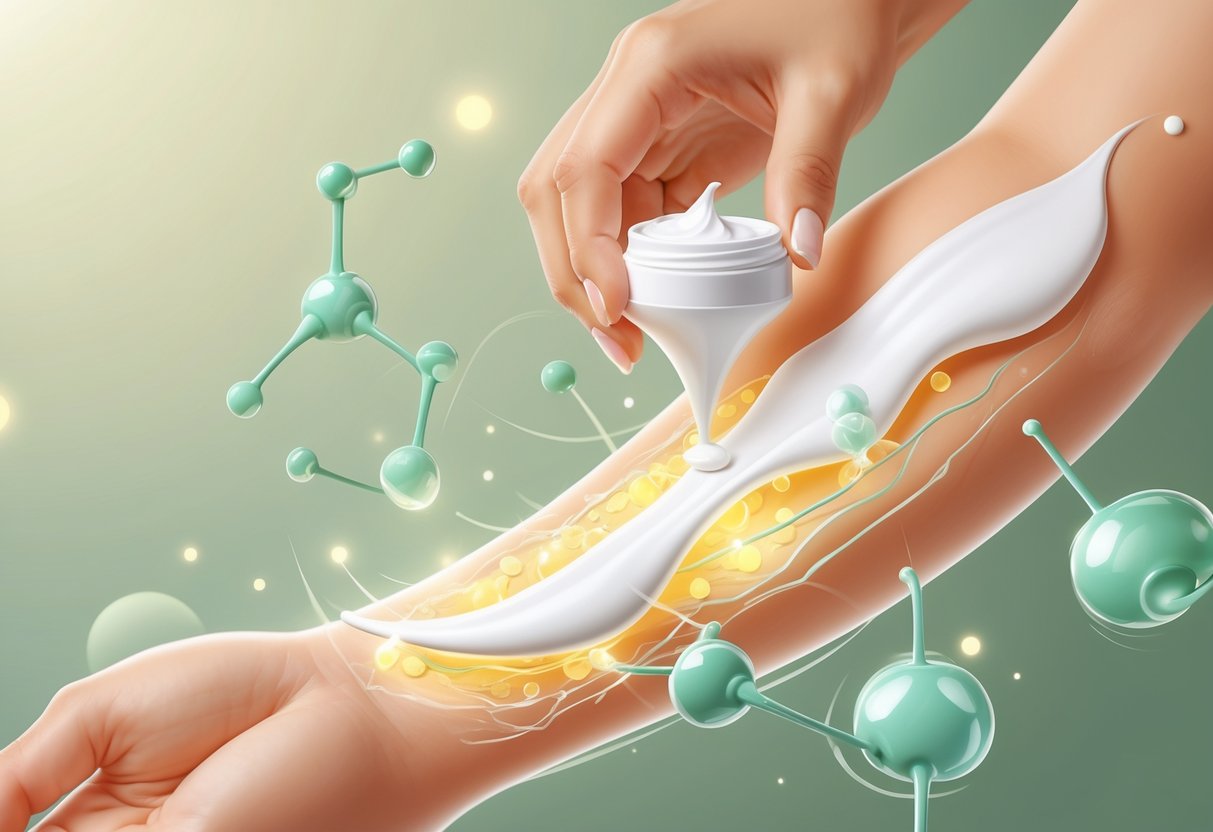
Natural progesterone cream delivers bioidentical hormones through the skin directly into the bloodstream. The timing of application during the menstrual cycle and proper absorption techniques determine how effectively it works.
Mechanism of Absorption
Natural progesterone cream works through transdermal absorption[1], bypassing the digestive system entirely. When applied to the skin, the hormone molecules penetrate through the outer layers and enter small blood vessels beneath the surface.
This delivery method mimics how the body naturally secretes progesterone directly into blood cells. The hormone then travels to target tissues before the liver metabolizes it.
Oral progesterone takes a different path. Pills go straight to the liver first, creating high levels of metabolites like pregnanediol. The long-term effects of these metabolites remain unknown.
Transdermal absorption offers better bioavailability than oral forms. However, dermal fatigue can reduce absorption over time[1] when using the same application site repeatedly.
The forearms typically provide the best absorption due to their network of surface veins and minimal fat tissue.
Application Guidelines and Best Practices
Timing matters significantly for menstruating women. Progesterone should be used during days 14-28 of the menstrual cycle[1], which corresponds to the luteal phase when progesterone naturally peaks.
Using progesterone throughout the entire cycle can disrupt normal hormone fluctuations and interfere with the uterine lining’s natural preparation process.
Application sites should rotate daily to prevent dermal fatigue:
- Inner thighs (left and right)
- Forearms (left and right)
- Neck area
- Lower abdomen
Dosage typically ranges from 20-40mg daily, though individual needs vary. Women experiencing fatigue or weight gain may need dosage adjustments, as these symptoms often indicate too high a dose.
Postmenopausal women follow different guidelines[1], using progesterone daily with periodic breaks since they no longer experience cyclical hormone changes.
Natural Progesterone Cream for Menopause and Perimenopause
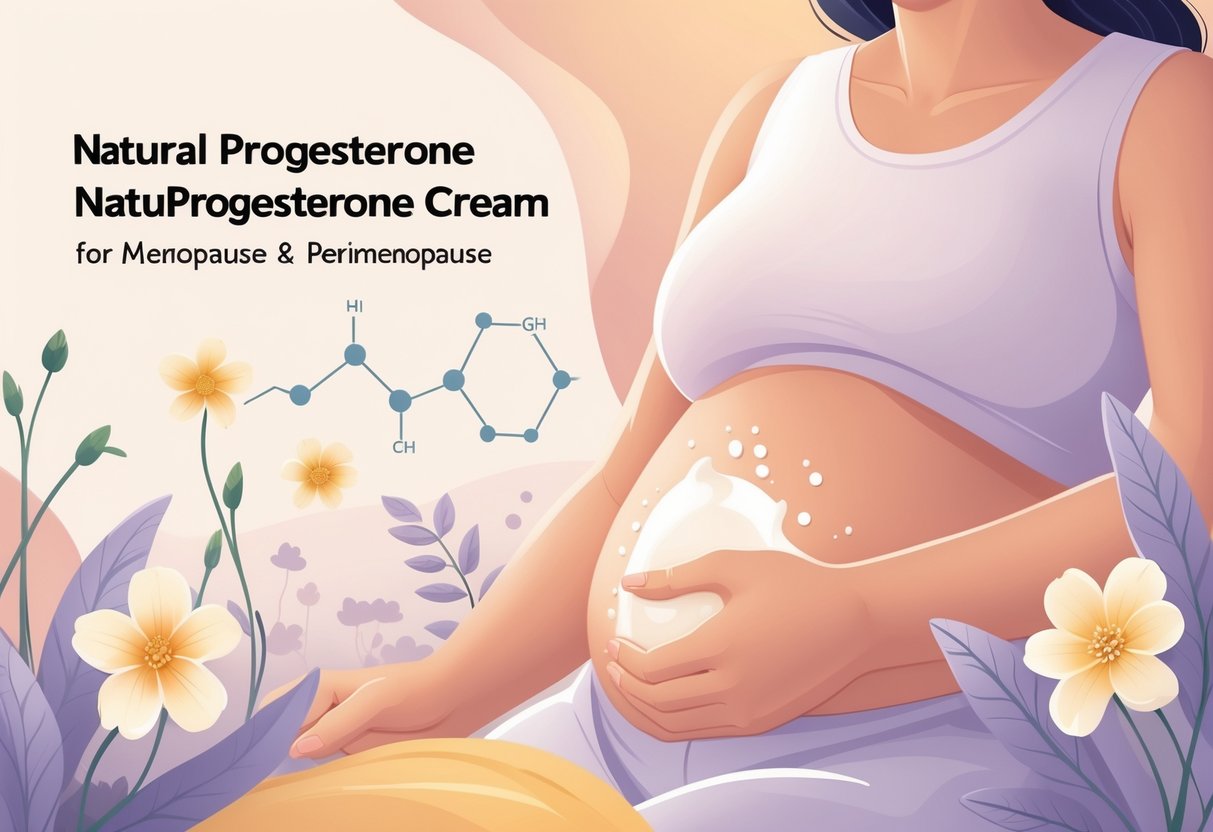
During menopause and perimenopause, declining progesterone levels can trigger uncomfortable symptoms like hot flashes and insomnia. Natural progesterone cream helps restore hormonal balance[3] by delivering bioidentical hormones through the skin, offering a gentler alternative to traditional hormone replacement therapy.
Effectiveness in Easing Menopausal Symptoms
Hormonal fluctuations during perimenopause can significantly impact physical and emotional wellbeing[4]. Natural progesterone cream addresses several key symptoms women experience during this transition.
Hot flashes often decrease when progesterone levels stabilize. The cream helps balance estrogen activity, which can reduce the intensity and frequency of these episodes.
Sleep disturbances commonly improve with progesterone use. Many women report better sleep quality and easier time falling asleep.
Mood swings and irritability may lessen as hormonal balance improves. Progesterone has calming effects that can help stabilize emotions during this challenging time.
For menopausal women, daily dosing works differently than for menstruating women[1]. Since hormones reach a steady state after menopause, women can use the cream daily with periodic breaks.
Recommended dosing patterns for menopause:
- Use daily for 25 days, then take 3-day break
- Use 6 days on, 1 day off each week
Comparing Natural Progesterone Cream to HRT
Traditional hormone replacement therapy typically combines synthetic estrogen and progestin. Natural progesterone cream offers bioidentical progesterone[5] that matches what the body produces naturally.
Key differences include:
| Natural Progesterone Cream | Traditional HRT |
|---|---|
| Available over-the-counter | Requires prescription |
| Bioidentical hormone | Often synthetic hormones |
| Applied to skin | Usually oral pills |
| Lower side effect risk | Higher side effect profile |
Natural progesterone creams typically cause fewer PMS-like side effects[6] compared to synthetic versions. This makes them appealing for women who cannot tolerate traditional HRT.
The cream bypasses liver metabolism when applied to skin. This direct absorption may provide more consistent hormone levels than oral medications.
However, traditional HRT may be more effective for severe menopausal symptoms. Women should discuss both options with healthcare providers to determine the best approach.
Other Uses: PMS, Hormone Imbalance, and Fertility Support

Many women turn to natural progesterone cream to address premenstrual symptoms, restore hormonal balance, and support reproductive health. The hormone plays key roles in regulating mood, reducing PMS severity, and maintaining healthy pregnancy conditions.
Premenstrual Symptoms and PMS Relief
Natural progesterone cream can help balance hormones[7] that contribute to PMS symptoms. Women often experience relief from common premenstrual complaints when progesterone levels are properly supported.
Common PMS symptoms that may improve include:
- Mood swings and irritability
- Anxiety and emotional changes
- Breast tenderness
- Bloating and water retention
- Sleep difficulties
The hormone works by counteracting estrogen dominance during the luteal phase of the menstrual cycle. This balance helps reduce the severity of emotional and physical symptoms many women face monthly.
Chasteberry and other natural supplements[8] work alongside progesterone to restore hormonal equilibrium. They help reduce prolactin production, which contributes to breast tenderness and mood disturbances.
Addressing Hormone Imbalance and Related Symptoms
Hormone imbalance affects many women due to stress, age, and environmental factors. Progesterone helps regulate and balance estradiol[1] levels in the female body.
Signs of hormone imbalance include:
- Irregular menstrual cycles
- Unexplained weight changes
- Persistent fatigue
- Low libido
- Hair loss or thinning
Estrogen dominance occurs when progesterone levels drop relative to estrogen. This imbalance can lead to tissue growth in breasts and the endometrial lining.
Women with conditions like PCOS, endometriosis, and hypothyroidism[9] often benefit from progesterone support. These conditions frequently involve progesterone resistance or deficiency.
Potential Benefits for Fertility and Pregnancy
Progesterone plays a crucial role in preparing the body for pregnancy and maintaining early pregnancy health. The hormone helps thicken the uterine lining for embryo implantation.
Fertility benefits may include:
- Improved egg quality
- Better uterine lining development
- Reduced miscarriage risk
- Enhanced implantation success
Low progesterone can contribute to fertility challenges and early pregnancy loss. Women with a history of multiple miscarriages or infertility issues[1] may have underlying progesterone deficiency.
During pregnancy, progesterone helps maintain the uterine environment. It prevents contractions that could lead to early labor and supports fetal development.
Healthcare providers often monitor progesterone levels in women trying to conceive. Supplementation may be recommended for those with documented deficiency affecting their reproductive health.
Scientific Evidence and Safety of Natural Progesterone Cream

The research on natural progesterone creams shows mixed results, with limited studies available and concerns about absorption rates and regulation. Safety data remains incomplete, particularly for long-term use and potential interactions with other medications.
Current Research and Efficacy Findings
Studies on natural progesterone creams have produced inconsistent results. Research shows that topical progesterone can increase skin elasticity and firmness[10] in menopausal women. However, this study focused on cosmetic benefits rather than hormone replacement effects.
A small 2009 study found that over-the-counter progesterone cream was as effective as oral progesterone[11] in some measures. This study only included 12 women, making the results less reliable.
Absorption Rate Problems
Natural progesterone creams have absorption rates ranging from 10-80%[12]. This wide range makes dosing unpredictable.
Blood tests show different results than saliva tests. Salivary levels of progesterone increase after cream use, but blood and urine levels do not[13].
Limited Protection Evidence
For endometrial protection, the data is concerning. Current evidence has failed to show endometrial protection from progesterone creams or gels[14].
Little evidence suggests that progesterone cream provides safe and beneficial treatment for endometriosis[15].
Long-Term Safety and Regulation
Natural progesterone creams face minimal regulation compared to prescription hormones. The FDA does not require the same safety testing for over-the-counter hormone products.
Regulatory Concerns
Unlike synthetic progesterone medications, natural progesterone creams avoid strict oversight. This creates quality control issues between different brands and products.
Unknown Long-Term Effects
Natural progesterone cream comes with potential risks and side effects[16] that require discussion before use. Long-term studies on safety remain limited.
Common Side Effects
Women may experience:
- Breast tenderness
- Mood changes
- Headaches
- Skin irritation at application sites
Serious Health Risks
While natural progesterone may carry lower risks than synthetic versions, hormone therapy can still increase chances of blood clots and stroke in some women. The unpredictable absorption rates make risk assessment difficult.
Possible Drug Interactions
Progesterone creams can interact with various medications, though research on specific interactions remains limited.
Blood Thinning Medications
Progesterone may affect how blood clotting medications work. Women taking warfarin or similar drugs should consult doctors before using progesterone creams.
Other Hormone Medications
Using progesterone creams alongside birth control pills or hormone replacement therapy can create unpredictable hormone levels. This combination may reduce effectiveness or increase side effects.
Supplements and Herbs
Some herbal supplements may enhance or reduce progesterone absorption. St. John’s wort and other liver-affecting herbs could change how the body processes progesterone.
Monitoring Needs
Doctors cannot easily monitor hormone levels from cream use since blood tests may not reflect actual absorption. This makes it harder to detect problems or adjust other medications safely.
Potential Side Effects and Risks
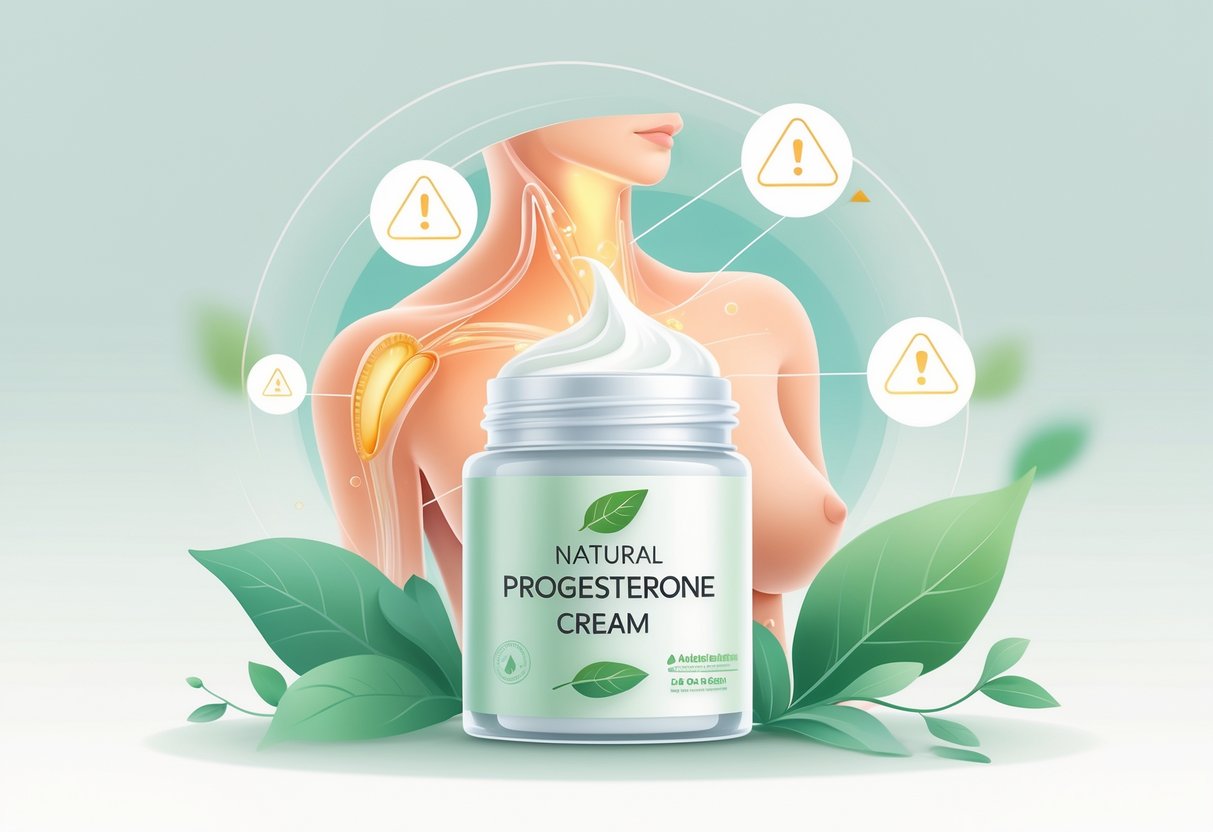
While natural progesterone cream may offer benefits, it can cause side effects ranging from mild skin reactions to more serious health complications. Certain women should avoid using these products entirely due to increased health risks.
Common Side Effects
Natural progesterone cream can cause several side effects[2] that users should monitor carefully. The most frequent reactions include skin rash at the application site, vaginal spotting, and swelling from fluid retention.
Mild to Moderate Side Effects:
- Skin rash or irritation
- Vaginal spotting or bleeding
- Fluid retention and swelling
- Breast tenderness
- Headaches
- Mood changes
More serious side effects require immediate medical attention. These include fast or irregular heartbeats, severe headaches, confusion, and vision problems.
Women using progesterone cream for bone health concerns should know that studies show mixed results for preventing osteoporosis[2]. The cream may not effectively prevent bone loss as some manufacturers claim.
Excessive use over long periods may increase risks[2] for blood clots, stroke, heart attack, and cancers of the breast or reproductive organs including the uterus.
Who Should Not Use Natural Progesterone Cream
Several groups of women should avoid natural progesterone cream completely. Pregnant and breastfeeding women should not use these products[2] due to unknown safety risks.
Women who should avoid progesterone cream:
- Pregnant women
- Breastfeeding mothers
- Those with active blood clots
- Women with unexplained vaginal bleeding
- Those with liver disease
- Women with hormone-sensitive cancers
Women taking certain medications face interaction risks. Progesterone cream has serious interactions with over 20 medications[2] including blood thinners, seizure medications, and some antibiotics.
Those with a history of breast cancer, uterine cancer, or other hormone-sensitive conditions should consult their doctor before use. The hormone effects could potentially stimulate cancer growth in these tissues.
Choosing and Using the Right Natural Progesterone Cream

Finding effective natural progesterone cream requires attention to ingredient quality and proper medical guidance. Women need products with verified progesterone content and professional oversight for safe, optimal results.
Quality and Purity Considerations
The most important factor when selecting natural progesterone cream is ensuring it contains progesterone USP, which is the bio-identical version[1] of the hormone your body produces naturally. This form matches your body’s natural progesterone exactly.
Key ingredients to look for:
- Progesterone USP as the active ingredient
- Paraben-free formulation
- Fragrance-free composition
- Clean, natural inactive ingredients
When comparing progesterone cream options, women need to check the exact progesterone content measured in milligrams[17] rather than choosing randomly. The typical effective dose ranges from 20 to 40mg per day, though individual needs vary significantly.
Avoid products that contain synthetic progestins instead of natural progesterone. These artificial hormones behave differently in the body and may cause unwanted side effects.
Check the cream’s consistency and absorption qualities. The best formulations absorb well through the skin without leaving heavy residue or causing irritation.
Consultation with Healthcare Providers
Professional medical guidance becomes essential before starting any progesterone supplementation program. Healthcare providers can assess individual hormone levels through proper testing and determine if progesterone cream is appropriate.
Important medical considerations:
- Baseline hormone level testing
- Review of current medications
- Assessment of underlying health conditions
- Monitoring during treatment
Women should get serum levels of both progesterone and estradiol tested before supplementation[1] to confirm the diagnosis and establish proper dosing. Some symptoms of hormone imbalance can indicate other medical conditions that require different treatments.
Medical supervision helps prevent potential complications from incorrect dosing or timing. Some women may not tolerate progesterone cream but could still benefit from progesterone pills[1], requiring professional guidance to find the right approach.
Healthcare providers can also help determine proper application timing based on menstrual status and individual needs.
Frequently Asked Questions

People often ask about side effects, timing of results, and proper application methods when considering progesterone cream. Many also want to know about fertility benefits and how bioidentical options compare to synthetic versions.
What are the potential side effects of using progesterone cream?
Progesterone can cause headaches and menstrual changes[18] in some users. These side effects typically occur when people first start using the cream or when they use too much.
Some women experience breast tenderness or mood swings. Others may notice changes in their sleep patterns or feel more tired than usual.
Natural progesterone cream ingredients can affect results[16] depending on the specific formula. Women with sensitive skin may develop rashes or irritation at the application site.
Long-term use may raise the odds of breast cancer and heart problems[18]. People should talk to their doctor before starting any hormone therapy.
How long does it typically take for natural progesterone cream to show results?
Most women notice changes within 2-4 weeks of regular use. The timing depends on individual hormone levels and the specific symptoms being treated.
Studies show premenopausal women using 40mg daily noticed improvements[19] in their symptoms. However, some symptoms may take longer to resolve than others.
Sleep improvements often appear first, usually within the first week. Mood changes and hot flashes may take 4-6 weeks to show significant improvement.
Consistency matters more than speed. Women who use the cream regularly see better results than those who skip applications frequently.
Can natural progesterone cream be used to aid fertility, and are there success stories?
Progesterone cream may help women with low progesterone levels during their luteal phase. This hormone is needed to maintain the lining of the uterus for pregnancy.
Some fertility specialists recommend progesterone supplements for women with repeated miscarriages. The cream form provides a gentler approach than pills or injections.
Success stories exist, but scientific evidence remains limited. Women trying to conceive should work with their doctor to determine the right approach.
The cream works best when combined with other fertility treatments. Timing the application with ovulation cycles is important for maximum benefit.
Is there a recommended way to apply progesterone cream for optimal benefits?
The cream should be applied to thin-skinned areas like the wrists, inner arms, or chest. These areas allow better absorption into the bloodstream.
Studies found that progesterone cream does not work well when applied to thick skin[20]. The hormone needs to reach the bloodstream to be effective.
Rotating application sites prevents the skin from becoming saturated. Women should use different areas each day to maintain good absorption.
Apply the cream at the same time each day for consistent hormone levels. Most experts recommend evening application since progesterone can cause drowsiness.
Which progesterone cream is considered the best among natural options?
The best creams contain USP-grade progesterone derived from wild yam or soy. These provide the same molecular structure as human progesterone.
Look for creams with 20-40mg of progesterone per application. Products with lower amounts may not provide therapeutic benefits.
Avoid creams with parabens, synthetic fragrances, or other harsh chemicals. Simple formulations work better and cause fewer skin reactions.
Third-party testing ensures the cream contains the stated amount of progesterone. Some over-the-counter products may have inconsistent hormone levels.
What are the differences between bioidentical and synthetic progesterone creams?
Bioidentical progesterone has the same molecular structure as the hormone made by human ovaries. This form can help balance hormones after menopause[21] more effectively.
Synthetic progesterone, called progestin, has a different chemical structure. This form may cause more side effects and doesn’t work the same way in the body.
Bioidentical versions come from plant sources but are processed in laboratories. The final product is chemically identical to natural human progesterone.
Synthetic versions were created to be patentable medications. They bind to progesterone receptors but may also affect other hormone pathways unexpectedly.
References
- How & When to Use Natural Progesterone Cream. https://www.restartmed.com/progesterone-cream/ Accessed November 8, 2025
- Progesterone Cream: Menopause Uses, Side Effects, Dosage. https://www.medicinenet.com/progesterone_natural/article.htm Accessed November 8, 2025
- Natural Progesterone Cream for Perimenopause: Navigating Hormonal Shifts with Confidence. https://mlrb.net/natural-progesterone-cream-perimenopause/ Accessed November 8, 2025
- Progesterone Cream For Perimenopause Relief Guide. https://outsmartmenopause.com/progesterone-cream-for-perimenopause/ Accessed November 8, 2025
- Guide to Natural Progesterone. https://www.larabriden.com/guide-to-using-progesterone-for-womens-health/ Accessed November 8, 2025
- What Are the Benefits of Natural Progesterone Creams?. https://www.drweil.com/health-wellness/health-centers/women/what-are-the-benefits-of-natural-progesterone-creams/ Accessed November 8, 2025
- Natural Progesterone Cream for Fertility, Menopause and Fibroids. https://draxe.com/health/progesterone-cream/ Accessed November 8, 2025
- PMS Relief Through Science: Which Natural Supplements Actually Work?. https://www.metagenicsinstitute.com/blogs/pms-relief-through-science-which-natural-supplements-actually-work/ Accessed November 8, 2025
- DIY Progesterone Cream Alternatives: Herbs and Recipes That Support Balance. https://alexandramackillop.com/diy-progesterone-cream-alternatives-herbs-and-recipes-that-support-balance/ Accessed November 8, 2025
- Effects and side-effects of 2% progesterone cream on the skin of peri- and postmenopausal women: results from a double-blind, vehicle-controlled, r.... https://pubmed.ncbi.nlm.nih.gov/16120154/ Accessed November 8, 2025
- Progesterone Cream: Benefits, Risks And Alternatives – Forbes Health. https://www.forbes.com/health/womens-health/progesterone-cream/ Accessed November 8, 2025
- Is Progesterone Cream the Answer for Hormone Imbalance?. https://drbrighten.com/is-progesterone-cream-the-answer-for-hormone-imbalance/ Accessed November 8, 2025
- Just a moment.... https://www.fertstert.org/article/S0015-0282(02)04542-9/fulltext/ Accessed November 8, 2025
- The dangers of compounded bioidentical hormone replacement therapy. https://pmc.ncbi.nlm.nih.gov/articles/PMC6808563/ Accessed November 8, 2025
- Progesterone cream for endometriosis: Benefits and more. https://www.medicalnewstoday.com/articles/progesterone-cream-and-endometriosis Accessed November 8, 2025
- Is Natural Progesterone Cream Safe? Answering Key Questions About Over-The-Counter Hormones. https://www.bodylogicmd.com/blog/is-natural-progesterone-cream-safe-answering-key-questions-about-over-the-counter-hormones/ Accessed November 8, 2025
- Redirecting.... https://menopausephix.com/best-progesterone-cream/ Accessed November 8, 2025
- Progesterone: Benefits, Side Effects, Supplements, and Risks. https://www.webmd.com/vitamins-and-supplements/progesterone-uses-and-risks Accessed November 8, 2025
- How to Use Progesterone Cream & Why You Should Consider It. https://proovtest.com/blogs/blog/how-to-use-progesterone-cream?srsltid=AfmBOoon4_8uwmMfRIY2cWB3H0qwDMm8HC16Cy_GrHcAicomqv0bIbZ- Accessed November 8, 2025
- Just a moment.... https://onlinedoctor.superdrug.com/progesterone-cream.html Accessed November 8, 2025
- Progesterone Cream: Frequently Asked Questions (FAQ's) by Dr. Lee — Official Website of John R. Lee, M.D. https://www.johnleemd.com/progesterone-cream Accessed November 8, 2025
